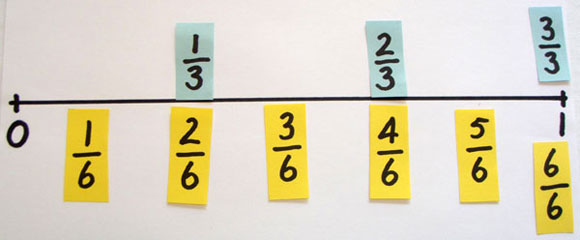Home > Fractions > Good teaching > Equivalence > Linear models
Linear models
In linear models of fractions, the length of the whole is divided into equal lengths.
A fraction is identified as being a particular distance from the 'start' of the whole.
Dividing strips of paper into equal lengths is an example of using a linear model to represent fractions.
Two or more of these strips placed side-by-side allows comparison of different fractions and identification of equivalent fractions. For example, it could be observed that half a strip is the same length as two-quarters of a strip.
Placing fractions on a number line uses a similar approach, but highlights the fact that some fractions occupy the same position on a number line and therefore represent the same quantity.
Fraction strips
Students fold strips of paper to create fractions then use the strips to build a fraction wall. The fraction wall facilitates comparison of fractions and the identification of equivalent fractions.
Fraction wall game
Students use dice to generate fractions that are coloured on an unlabelled fraction wall. Strategies develop for colouring equivalent fractions to fill the fraction wall.

